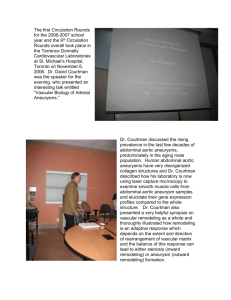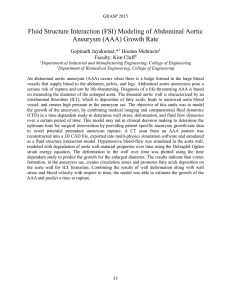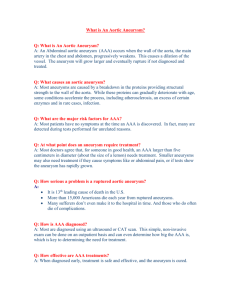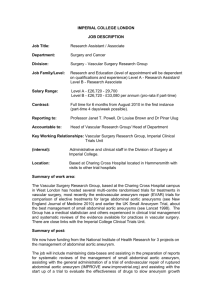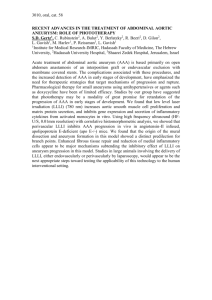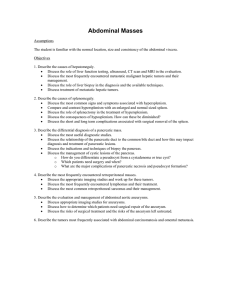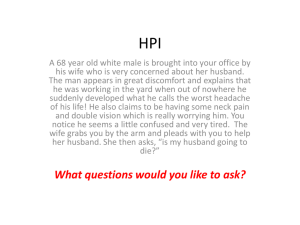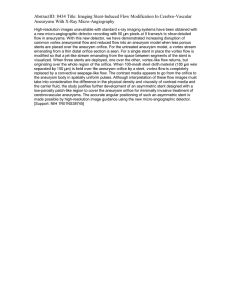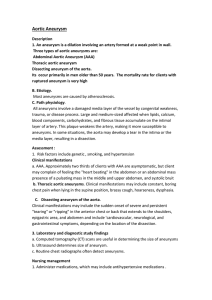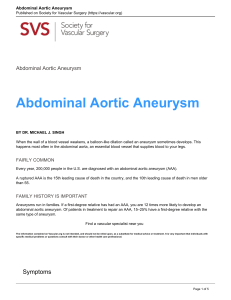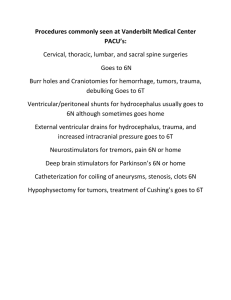Common Vascular Problems in Primary Care Abdominal Aortic Aneurysm (AAA)
advertisement
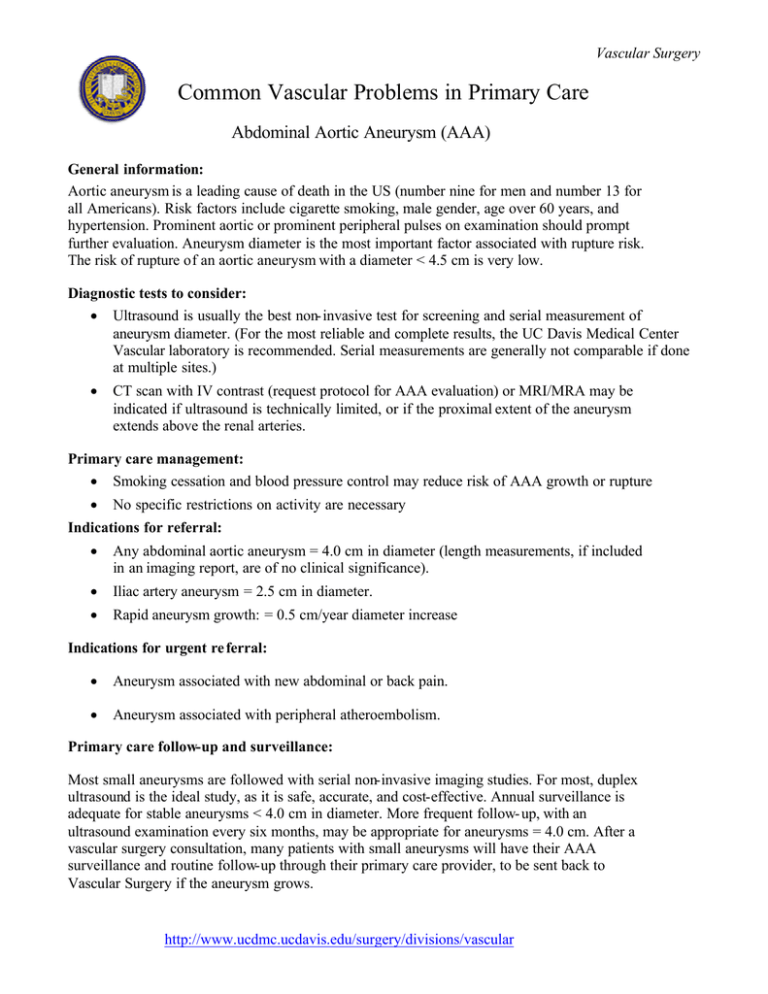
Vascular Surgery Common Vascular Problems in Primary Care Abdominal Aortic Aneurysm (AAA) General information: Aortic aneurysm is a leading cause of death in the US (number nine for men and number 13 for all Americans). Risk factors include cigarette smoking, male gender, age over 60 years, and hypertension. Prominent aortic or prominent peripheral pulses on examination should prompt further evaluation. Aneurysm diameter is the most important factor associated with rupture risk. The risk of rupture of an aortic aneurysm with a diameter < 4.5 cm is very low. Diagnostic tests to consider: • Ultrasound is usually the best non- invasive test for screening and serial measurement of aneurysm diameter. (For the most reliable and complete results, the UC Davis Medical Center Vascular laboratory is recommended. Serial measurements are generally not comparable if done at multiple sites.) • CT scan with IV contrast (request protocol for AAA evaluation) or MRI/MRA may be indicated if ultrasound is technically limited, or if the proximal extent of the aneurysm extends above the renal arteries. Primary care management: • Smoking cessation and blood pressure control may reduce risk of AAA growth or rupture • No specific restrictions on activity are necessary Indications for referral: • Any abdominal aortic aneurysm = 4.0 cm in diameter (length measurements, if included in an imaging report, are of no clinical significance). • Iliac artery aneurysm = 2.5 cm in diameter. • Rapid aneurysm growth: = 0.5 cm/year diameter increase Indications for urgent re ferral: • Aneurysm associated with new abdominal or back pain. • Aneurysm associated with peripheral atheroembolism. Primary care follow-up and surveillance: Most small aneurysms are followed with serial non-invasive imaging studies. For most, duplex ultrasound is the ideal study, as it is safe, accurate, and cost-effective. Annual surveillance is adequate for stable aneurysms < 4.0 cm in diameter. More frequent follow- up, with an ultrasound examination every six months, may be appropriate for aneurysms = 4.0 cm. After a vascular surgery consultation, many patients with small aneurysms will have their AAA surveillance and routine follow-up through their primary care provider, to be sent back to Vascular Surgery if the aneurysm grows. http://www.ucdmc.ucdavis.edu/surgery/divisions/vascular
